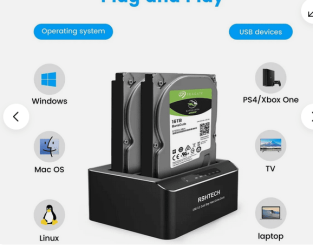On any System experiencing "undetected" READ ERRORS, by the time you off-line image your System with the "robust" method you describe above, the DATA being imaged is almost sure to be trashed before the image is even executed. Just think of all those corrupted (non-error detected) DATA changes being changed by apps and rewritten back to the System in an error free state... worthless DATA at this point no matter what type of imaging verification method is used.
In relation to undetected READ ERRORS, the above discussion seems pointless.
It may seem pointless to you, but isn't.
Error Correction Code (ECC) technology is a crucial component in modern SSDs, designed to detect and correct errors that occur during data storage and retrieval. ECC works by generating codes based on the data being written and storing these codes alongside the data. When the data is read, the ECC codes are recalculated and compared to the stored codes to identify and correct any discrepancies.
While ECC significantly enhances data integrity and reliability, it is not entirely "bulletproof". There is still a small possibility that read errors can go undetected, especially in consumer-grade SSDs. The effectiveness of ECC depends on the sophistication of the algorithms used and the quality of the SSD's controller.
In mainstream consumer-grade SSDs, basic ECC is generally adequate for most users, but it may not be as robust as the ECC used in enterprise-grade models, which are designed to meet more stringent reliability requirements. Therefore, while ECC technology greatly reduces the likelihood of undetected read errors, it does not completely eliminate the risk.
Even if a certain block of data is read twice, there still can be no
absolute guarantee that
both reads cannot fail in such a particular way that
1/ both failures go undetected
and 2/ both reads produce identical results. Fortunately however, the chance of this happening is small enough that every engineer (every
sane engineer anyway) who understands how data storage works will confirm that a detection mechanism that reads the data twice so as to compare each read result is going to be robust.
That is, at least if implemented in such a way that doesn't spoil this concept with the type of flaws that would defeat its purpose. As an Enterprise Java software developer, preventing these types of flaws plays a critical role in what I do for a living. Sure, most users don't have the same stringent reliability requirements as the people I work for. But then, I am not "most users". lol For one, most users don't ask themselves questions like, e.g., "why should I take the risk?"
Again, I will add that the potential risk of undetected read errors is not the only risk. To mitigate
other risks, for most users on a
normal Windows PC, choosing to use the bootable media to make a
cold image of the Windows installation is still the only way. The effort that it takes to boot from a Ventoy-formatted USB flash drive that had the bootable ISO of Acronis True Image copied onto it is negligible when you only need to make a backup of your Windows partition, like, maybe less than a few times per year so, please tell me why
should I take the risk?
Finally, this isn't just about mitigating those risks. It's also about having the extra features that it takes to avoid wasting additional time like futzing around with registry settings to be able to specify file/folder exclusions and being unpermitted to pick a destination folder that is included in the source selection.
What it isn't about, though, are scarecrow tactics. The thing with backups is that they have to be reliable. Else, you have no backups at all. Just because your house never caught on fire, doesn't also mean that you don't need smoke alarms or fire exits. This is not how the world works. You may still choose to
believe that this is how the world works. Just like you may choose to believe the Earth is flat.







